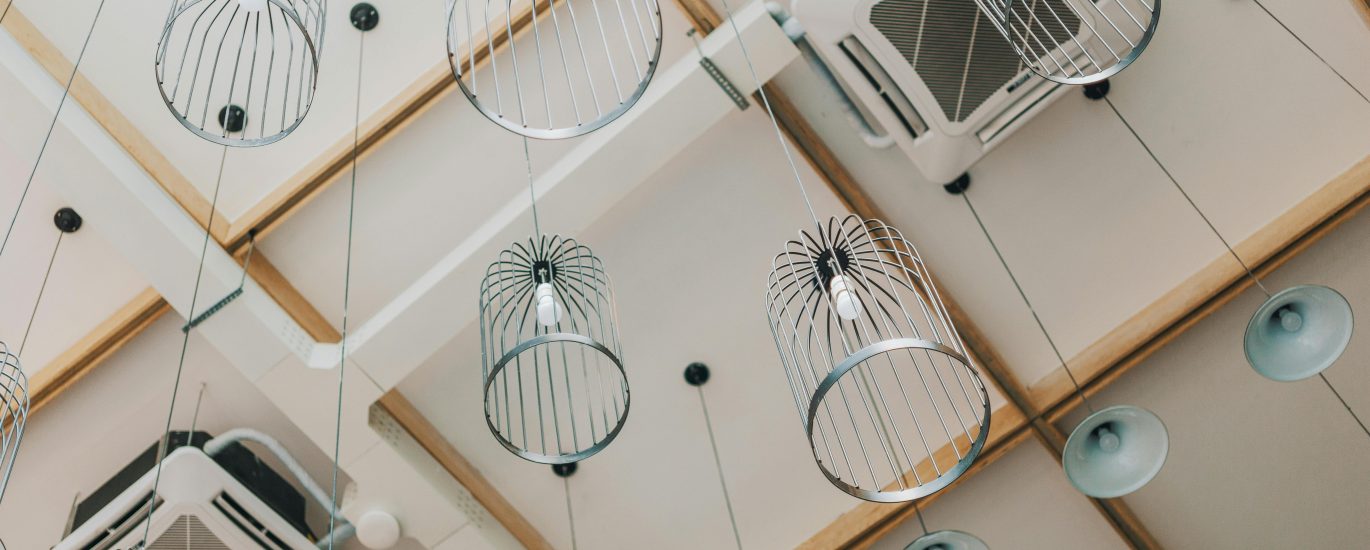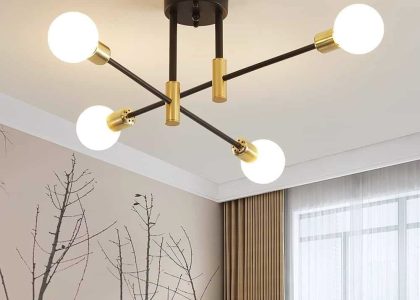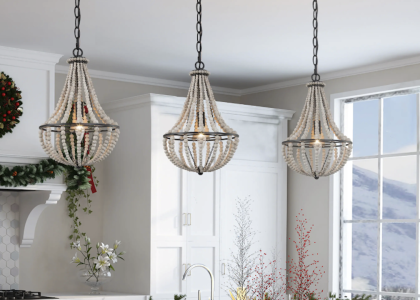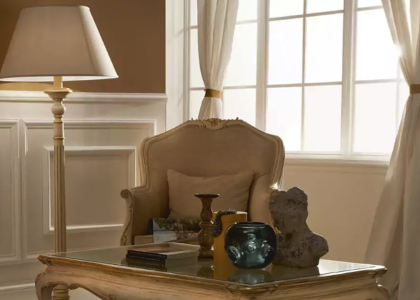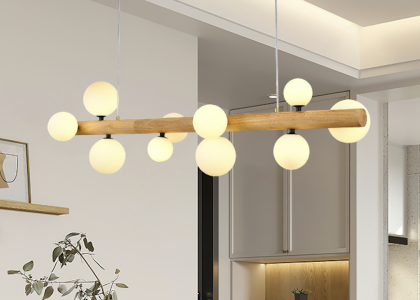Outdoor priys lighting refers to the illumination of outdoor spaces such as gardens, patios, pathways, and driveways. It serves multiple purposes, including safety, security, and aesthetics. Outdoor lighting not only enhances the beauty of your outdoor space but also provides a sense of security and safety by illuminating potential hazards and deterring intruders.
One of the key benefits of outdoor lighting is safety. Well-lit pathways and driveways ensure that you can navigate your outdoor space without the risk of tripping or falling. Additionally, outdoor lighting can help prevent accidents by illuminating potential hazards such as steps, uneven surfaces, or low-hanging branches.
Outdoor lighting also plays a crucial role in enhancing the security of your property. A well-lit exterior can deter potential intruders by eliminating dark hiding spots and making it easier for neighbors or passersby to spot any suspicious activity. Furthermore, outdoor lighting can be integrated with motion sensors or timers to automatically turn on when someone approaches your property, further enhancing security.
In terms of aesthetics, outdoor lighting can transform your outdoor space into a beautiful and inviting area. By strategically placing lights around your garden or patio, you can highlight architectural features, plants, or other elements that you want to showcase. This creates a warm and inviting atmosphere that can be enjoyed both during the day and at night.
Types of Outdoor Lighting Fixtures and Their Functions
There are various types of outdoor lighting fixtures available, each serving a specific function and best suited for different areas of your outdoor space.
1. Path Lights: Path lights are typically low-level fixtures that are used to illuminate pathways, driveways, or walkways. They provide a soft and subtle glow that guides people along the designated path while adding a touch of elegance to the landscape.
2. Floodlights: Floodlights are powerful fixtures that emit a broad beam of light over a large area. They are commonly used for security purposes, as they can illuminate a wide space and deter potential intruders. Floodlights can also be used to highlight specific architectural features or large trees in your outdoor space.
3. Spotlights: Spotlights are similar to floodlights but emit a narrower beam of light. They are ideal for highlighting specific objects or areas in your outdoor space, such as statues, fountains, or plants. Spotlights can create dramatic effects and draw attention to focal points.
4. Wall Lights: Wall lights are mounted on exterior walls and provide both functional and decorative lighting. They can be used to illuminate entryways, patios, or outdoor seating areas. Wall lights come in various styles and designs, allowing you to choose fixtures that complement the overall aesthetic of your outdoor space.
5. String Lights: String lights are a popular choice for creating a festive and cozy atmosphere in outdoor spaces. They consist of multiple small bulbs connected by a string and can be hung across patios, pergolas, or trees. String lights add a warm and inviting ambiance, perfect for entertaining guests or enjoying a quiet evening outdoors.
Factors to Consider When Choosing Outdoor Lighting
When choosing outdoor lighting fixtures for your space, there are several factors to consider to ensure that you select the right type of lighting that meets your needs and preferences.
1. Purpose: Determine the primary purpose of the lighting in your outdoor space. Are you looking for functional lighting to enhance safety and security, or do you want to create a specific ambiance? Understanding the purpose will help you choose the appropriate fixtures.
2. Style: Consider the overall style and design of your outdoor space. Choose lighting fixtures that complement the existing aesthetic and blend well with the surroundings. Whether your outdoor space has a modern, traditional, or rustic design, there are lighting options available to suit every style.
3. Power Source: Decide whether you want your outdoor lighting to be hardwired or powered by electricity. Hardwired lighting requires professional installation and is typically more permanent, while electric-powered lighting can be easily installed and moved around as needed.
4. Energy Efficiency: Opt for energy-efficient lighting options to reduce energy consumption and lower your electricity bills. LED lights are a popular choice for outdoor lighting as they are long-lasting, energy-efficient, and provide bright illumination.
5. Maintenance: Consider the maintenance requirements of the lighting fixtures you choose. Some fixtures may require regular cleaning or bulb replacement, while others may be more low-maintenance. Choose fixtures that fit your lifestyle and maintenance preferences.
How to Create a Warm and Inviting Atmosphere with Outdoor Lighting
Outdoor lighting can be used to create a warm and inviting atmosphere in your outdoor space, making it a cozy and enjoyable area for relaxation or entertaining guests.
1. Layered Lighting: Use a combination of different types of lighting fixtures to create layers of light in your outdoor space. This includes ambient lighting, task lighting, and accent lighting. Ambient lighting provides overall illumination, task lighting serves a specific purpose such as reading or cooking, and accent lighting highlights specific features or areas.
2. Soft and Warm Light: Opt for warm-colored bulbs or filters to create a cozy and inviting ambiance. Warm light is more relaxing and comfortable compared to cool white light. Consider using string lights or lanterns with warm-colored bulbs to add a soft glow to your outdoor space.
3. Dimmers: Install dimmers on your outdoor lighting fixtures to adjust the brightness according to your needs and preferences. Dimmers allow you to create different moods and atmospheres depending on the occasion or time of day.
4. Highlight Focal Points: Use spotlights or uplights to highlight focal points in your outdoor space, such as statues, water features, or architectural elements. This draws attention to these areas and creates a visually appealing focal point.
5. Pathway Lighting: Install path lights along walkways or driveways to create a welcoming and safe environment. Path lights not only guide people along the designated path but also add a touch of elegance and charm to your outdoor space.
Tips for Maximizing Outdoor Lighting for Safety and Security
Outdoor lighting plays a crucial role in enhancing safety and security in your outdoor space. Here are some tips to maximize the effectiveness of your outdoor lighting for these purposes:
1. Strategic Placement: Place lighting fixtures strategically to eliminate dark spots and ensure that all areas of your outdoor space are well-lit. Focus on areas that are prone to accidents or potential hiding spots for intruders, such as entryways, pathways, and windows.
2. Motion Sensors: Install motion sensors on your outdoor lighting fixtures to automatically turn on when someone approaches your property. This not only saves energy but also acts as a deterrent for potential intruders.
3. Timers: Use timers to control the operation of your outdoor lighting. Set them to turn on at dusk and off at a specific time or use programmable timers to create a schedule that suits your needs. This ensures that your outdoor space is always well-lit, even when you are away from home.
4. Lighting Levels: Ensure that the lighting levels in your outdoor space are appropriate for the intended purpose. For example, pathways and driveways should be well-lit to prevent accidents, while security lighting should be bright enough to deter intruders.
5. Regular Maintenance: Regularly inspect and maintain your outdoor lighting fixtures to ensure they are functioning properly. Replace any burnt-out bulbs or damaged fixtures promptly to maintain optimal safety and security.
Highlighting Landscape Features with Outdoor Lighting

Outdoor lighting can be used to highlight and showcase the beautiful features of your landscape, creating a visually stunning and captivating outdoor space.
1. Uplighting: Use uplights to illuminate trees, shrubs, or other tall plants in your garden. This creates a dramatic effect by casting light upwards and highlighting the unique shapes and textures of the plants.
2. Silhouetting: Place spotlights behind objects such as statues or architectural elements to create a silhouette effect. This adds depth and visual interest to your outdoor space, drawing attention to these features.
3. Grazing: Use grazing techniques to highlight the texture of walls, fences, or other vertical surfaces. This involves placing lights close to the surface and angling them upwards to create a grazing effect that accentuates the texture and adds depth.
4. Water Features: Install underwater lights in ponds, fountains, or waterfalls to create a mesmerizing effect. The lights illuminate the water, creating a beautiful reflection and enhancing the overall ambiance of your outdoor space.
5. Pathway Lighting: Use path lights along garden pathways or walkways to not only provide safety but also highlight the surrounding plants or flowers. This creates a visually appealing and inviting atmosphere as you navigate through your outdoor space.
Energy-Efficient Outdoor Lighting Solutions
Energy efficiency is an important consideration when it comes to outdoor lighting. By choosing energy-efficient options, you can save money on electricity bills and reduce your environmental impact.
1. LED Lights: LED lights are highly energy-efficient and have a long lifespan compared to traditional incandescent bulbs. They consume less energy while providing bright illumination, making them an ideal choice for outdoor lighting.
2. Solar-Powered Lights: Solar-powered lights are powered by sunlight and do not require any electrical wiring or connection to the power grid. They have built-in solar panels that charge during the day and automatically turn on at night. Solar-powered lights are a sustainable and cost-effective option for outdoor lighting.
3. Low-Voltage Lighting: Low-voltage lighting systems operate at 12 volts instead of the standard 120 volts used in traditional lighting systems. This significantly reduces energy consumption and allows for more flexibility in installation. Low-voltage lighting is safe, easy to install, and can be used for a variety of outdoor lighting applications.
4. Timers and Sensors: Use timers and sensors to control the operation of your outdoor lighting. Timers can be programmed to turn on and off at specific times, ensuring that your lights are only on when needed. Sensors, such as motion sensors or photocells, can automatically turn on the lights when someone approaches or when it gets dark.
5. Energy-Efficient Fixtures: Choose outdoor lighting fixtures that are specifically designed to be energy-efficient. Look for fixtures with the ENERGY STAR label, as they meet strict energy efficiency guidelines set by the Environmental Protection Agency (EPA).
Creating a Festive Atmosphere with Outdoor Lighting for Special Occasions
Outdoor lighting can be used to create a festive atmosphere for special occasions such as holidays, parties, or events. Here are some tips to make your outdoor space come alive with lighting:
1. String Lights: Hang string lights across your patio, pergola, or trees to create a magical and festive ambiance. Choose string lights with different colors or shapes to match the theme of the occasion.
2. Lanterns: Use lanterns with candles or LED lights to add a warm and cozy glow to your outdoor space. Place them on tables, along pathways, or hang them from trees to create a festive atmosphere.
3. Colored Lights: Use colored lights to create a festive and vibrant atmosphere. For example, red and green lights can be used for Christmas, while orange lights can be used for Halloween. Colored lights can also be used to match the theme of a party or event.
4. Projection Lights: Projection lights are an easy and effective way to create a festive atmosphere. They project images or patterns onto surfaces such as walls or trees, adding a touch of whimsy and excitement to your outdoor space.
5. Fire Features: Incorporate fire features such as fire pits or torches to create a warm and inviting atmosphere. The flickering flames provide a cozy and festive ambiance, perfect for gathering around with friends and family.
Maintenance and Care of Outdoor Lighting Fixtures
Proper maintenance and care of your outdoor lighting fixtures are essential to ensure their longevity and optimal performance. Here are some tips to help you maintain your outdoor lighting:
1. Regular Cleaning: Regularly clean your outdoor lighting fixtures to remove dirt, dust, or debris that may accumulate over time. Use a soft cloth or sponge and mild soap to gently wipe down the fixtures. Avoid using abrasive cleaners or harsh chemicals that may damage the finish.
2. Bulb Replacement: Replace any burnt-out bulbs promptly to maintain optimal illumination. Check the manufacturer’s instructions for the correct type of bulb to use and follow the recommended replacement schedule.
3. Fixture Inspection: Periodically inspect your outdoor lighting fixtures for any signs of damage or wear. Check for loose connections, cracked lenses, or corroded wires. Address any issues promptly to prevent further damage or potential safety hazards.
4. Weather Protection: Protect your outdoor lighting fixtures from harsh weather conditions such as rain, snow, or extreme temperatures. Choose fixtures that are specifically designed for outdoor use and have appropriate weatherproof ratings.
5. Professional Maintenance: Consider hiring a professional electrician or lighting specialist for regular maintenance and inspection of your outdoor lighting system. They can ensure that all components are functioning properly, make any necessary repairs, and provide expert advice on optimizing your outdoor lighting.
Enhancing Your Outdoor Space with Effective Lighting
Outdoor lighting is an essential element in creating a beautiful, safe, and inviting outdoor space. It serves multiple purposes, including safety, security, and aesthetics. By choosing the right type of lighting fixtures and strategically placing them in your outdoor space, you can enhance its beauty, create a warm and inviting atmosphere, and ensure the safety and security of your property.
Consider factors such as the purpose of the lighting, the style of your outdoor space, and energy efficiency when selecting outdoor lighting fixtures. Use a combination of different types of lighting to create layers of light and highlight specific features or areas. Regular maintenance and care of your outdoor lighting fixtures are crucial to ensure their longevity and optimal performance.
By incorporating effective outdoor lighting into your outdoor space, you can transform it into a stunning and functional area that can be enjoyed day and night. Whether you want to create a cozy ambiance for relaxation or a festive atmosphere for special occasions, outdoor lighting is a powerful tool that can enhance your outdoor experience.


